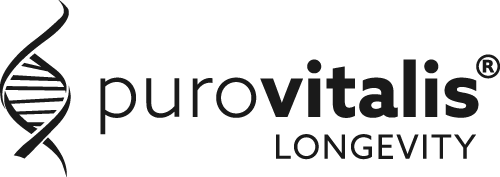
Visceral fat is the fat that sits deep inside your belly, wrapped around organs such as the liver, intestines, and kidneys. A small amount of this fat is normal and even useful, because it cushions organs and acts as a backup source of energy [1-2]. The problem of visceral fat starts when there is too much of it.
Unlike the fat just under your skin, visceral fat is very active. It releases chemicals that can cause low-grade inflammation in the body and make it harder for your cells to respond to insulin [3].
Over time, this increases the risk of serious health problems like heart disease, type 2 diabetes, fatty liver disease (NAFLD), and even some cancers [4-8].
In this blog, we will look at what visceral fat is, why it matters for your health, how it can be measured, and practical ways to reduce it through lifestyle, diet, and supplements.
table of contents
Visceral fat and aging
As people age, fat distribution in the body changes. Even if body weight stays about the same, more fat is stored around the organs. This happens partly because we lose muscle mass, move less, and experience hormonal changes. Research shows that women tend to build up visceral fat twice as much as men as they get older [9].
The impact of visceral fat on health is significant. Extra visceral fat puts stress on the liver and other organs, raises blood sugar, and fuels inflammation throughout the body. Because of this, it shortens the health-span and can cut life expectancy.
In short
Visceral fat is not just “belly fat.” It is a hidden type of fat that acts inside the body in harmful ways if there is too much of it. Keeping it under control through lifestyle choices is one of the most important steps for protecting long-term health and ageing well.
Types of body fat
The body stores fat in several areas, each with its own purpose. Subcutaneous fat sits just beneath the skin, making it the most visible type. It works as insulation, cushions the body, and functions as an energy reserve. In moderate amounts, it is generally harmless and can even aid metabolism by releasing hormones such as adiponectin [10].
Definition of Adiponectin
A hormone released by fat cells that helps regulate blood sugar and fat metabolism. Higher levels are linked to better metabolic health, while lower levels are often seen with excess visceral fat.
Visceral fat is found deeper, surrounding the internal organs. Although it is often associated with disease, it does serve useful roles in normal amounts by protecting organs and acting as a quick energy source during fasting or stress [2]. Problems arise when too much builds up, since excess visceral fat increases inflammatory signals and free fatty acids, which can overload metabolism and raise risks for conditions such as cardiovascular disease.
A key difference exists between fat and muscle. Muscle tissue burns calories even while resting, supporting blood sugar balance and physical strength [11]. Fat tissue does not burn calories the same way, and because it is less dense, the same weight of fat occupies more space in the body than muscle.
Did you know?
Of course one pound of muscle weighs the same as one pound of fat. The real difference is density: muscle is more compact, takes up less space, and works harder for your health – while fat simply takes up more room (Cleveland Clinic, 2024).
In balance, both subcutaneous and visceral fat have important functions. Health problems arise mainly when the body stores excess fat in the wrong places, especially inside the abdomen.
Understanding visceral fat levels
Because visceral fat is hidden, it cannot be measured just by looking in the mirror. As a rule of thumb, visceral fat should make up about 10% of total body fat [1]. Higher levels increase metabolic risk.
Ways to estimate visceral fat:
- Waist size: Above 88 cm (35 in) for women or 102 cm (40 in) for men suggests too much visceral fat.
- Waist-to-hip ratio: A higher ratio indicates more belly fat compared to the hips.
- Smart scales: Give estimates, but not exact numbers.
- Medical scans (MRI, CT, DEXA): The most accurate, but mainly used in medical or research settings.
There is no universal “ideal number” in pounds or kilos. The goal is to keep waist and waist-to-hip ratio in healthy ranges and use measurements as a guide rather than an absolute truth.
What is a DEXA scan?
A DEXA scan (short for Dual-Energy X-ray Absorptiometry) is a medical imaging test that measures body composition and bone density. It uses two low-dose X-ray beams at different energy levels to differentiate between bone, fat, and lean tissue.
Losing visceral fat
Visceral fat is not permanent, and the best way to reduce it is through healthy lifestyle choices:
| Lifestyle habit | How it helps reduce visceral fat |
|---|---|
| Exercise | Aim for at least 30 minutes most days. Cardio, strength training, and HIIT all help[1]. |
| Diet | Mediterranean and DASH diets reduce visceral fat. Focus on vegetables, whole grains, lean protein, and healthy fats while limiting processed foods and sugar. |
| Intermittent fasting | Encourages the body to burn stored fat during fasting periods. |
| Sleep | Good sleep supports metabolism; poor sleep makes fat loss harder. |
| Stress management | Lowering stress helps control cortisol, which drives belly fat storage. |
| Limit alcohol | Reduces empty calories and supports liver health. |
Visceral fat often responds faster than subcutaneous fat so yes, it can be lost successfully. Many people see visceral fat loss improvements within 2–3 months of consistent effort [1].
Visceral fat and diet
Food plays a major role in how much visceral fat the body stores. Diets high in processed foods, added sugars, and unhealthy fats tend to promote fat accumulation around the organs, especially in the liver. On the other hand, a diet based on whole, nutrient-rich foods helps protect the liver, improve metabolism, and reduce inflammation.
Eating patterns such as the Mediterranean diet—which emphasizes vegetables, fruits, fish, legumes, olive oil, and nuts—and the DASH diet, focused on vegetables, whole grains, and low sodium intake, have both been shown to lower visceral fat, reduce cholesterol, and support heart and metabolic health [12-13].
Some individual foods can be especially helpful:
- Cruciferous vegetables like broccoli and Brussels sprouts support liver detoxification.
- Coffee is linked to a lower risk of fatty liver disease [14].
What are Cruciferous vegetables?
Cruciferous vegetables belong to the Brassicaceae family and include broccoli, cauliflower, cabbage, kale, and Brussels sprouts. They’re rich in fiber, vitamin C, vitamin K, and plant compounds like glucosinolates, which support detoxification, hormone balance, and healthy aging.
Keeping these foods as part of a balanced, long-term diet is one of the simplest ways to manage visceral fat and promote healthy aging.
Supplements that help reduce visceral fat
No supplement alone removes visceral fat, but some support metabolism and make lifestyle changes more effective:
- Quercetin – reduces inflammation and supports fat metabolism [15].
- Resveratrol – supports mitochondrial health and may reduce liver fat [16-17].
- Spermidine – promotes autophagy, the body’s “clean-up” process [18].
At Purovitalis, these are made in liposomal form for better absorption. Unlike “fat burners,” they work by supporting systemic processes: reducing inflammation, improving energy use, and supporting cell health.
Read more about liposomal technology here: Purovitalis liposomal technology.
Used alongside healthy eating and exercise, these supplements may help reduce long-term risks of visceral fat and support healthy aging.
References
- Cleveland Clinic. Visceral Fat: What It Is & How It Affects You. 2025 Aug 22. Available from: https://my.clevelandclinic.org/health/diseases/24147-visceral-fat
- Yang X, Sui W, Zhang M, Dong M, Lim S, Seki T, et al. Switching harmful visceral fat to beneficial energy combustion improves metabolic dysfunctions. JCI Insight. 2017;2(4):e89044. doi:10.1172/jci.insight.89044
- Jorge ASB, Andrade JMO, Paraíso AF, Jorge GCB, Silveira CM, Souza LR, Santos EP, Guimaraes ALS, Santos SHS, De-Paula AMB. Body mass index and the visceral adipose tissue expression of IL-6 and TNF-alpha are associated with the morphological severity of non-alcoholic fatty liver disease in individuals with class III obesity. Obes Res Clin Pract. 2018;12(Suppl 2):1-8. doi:10.1016/j.orcp.2016.03.009
- Bansal S, Vachher M, Arora T, Kumar B, Burman A. Visceral fat: A key mediator of NAFLD development and progression. Hum Nutr Metab. 2023;33:200210. doi:10.1016/j.hnm.2023.200210
- Cleveland Clinic. The Difference Between Muscle vs. Fat Weight. 2024 Apr 12. Available from: https://health.clevelandclinic.org/muscle-vs-fat-weight
- Dhokte S, Czaja K. Visceral adipose tissue: The hidden culprit for type 2 diabetes. Nutrients. 2024;16(7):1015. doi:10.3390/nu16071015
- Wu Q-W, He Y-H, Li P-H, Gu S-L, Song R, Zhang D-Y, et al. Exploring the link between visceral fat and cardiovascular disease in type 2 diabetes: Evidence from CT measurements. Front Endocrinol. 2025;16:1635282. doi:10.3389/fendo.2025.1635282
- Silveira EAS, Vaseghi G, de Carvalho Santos AS, Kliemann N, Masoudkabir F, Noll M, et al. Visceral obesity and its shared role in cancer and cardiovascular disease: A scoping review of the pathophysiology and pharmacological treatments. Int J Mol Sci. 2020;21(23):9042. doi:10.3390/ijms21239042
- Hunter GR, Gower BA, Kane BL. Age related shift in visceral fat. Int J Body Compos Res. 2010;8(3):103–8.
- Guenther M, James R, Marks J, Zhao S, Szabo A, Kidambi S. Adiposity distribution influences circulating adiponectin levels. Transl Res. 2014;164(4):270–7. doi:10.1016/j.trsl.2014.04.008
- McPherron AC, Guo T, Bond ND, Gavrilova O. Increasing muscle mass to improve metabolism. Adipocyte. 2013;2(2):92–8. doi:10.4161/adip.22500
- Zelicha H, Kloting N, Kaplan A, Yaskolka Meir A, Rinott E, Tsaban G, et al. The effect of high-polyphenol Mediterranean diet on visceral adiposity: The DIRECT PLUS randomized controlled trial. BMC Med. 2022;20(1):327. doi:10.1186/s12916-022-02525-8
- Ferguson CC, Knol LL, Ellis AC. Visceral adiposity index and its association with Dietary Approaches to Stop Hypertension (DASH) diet scores among older adults: National Health and Nutrition Examination Surveys 2011-2014. Clin Nutr. 2021;40(6):4085–9. doi:10.1016/j.clnu.2021.02.008
- Hayat U, Siddiqui AA, Okut H, Afroz S, Tasleem S, Haris A. The effect of coffee consumption on the non-alcoholic fatty liver disease and liver fibrosis: A meta-analysis of 11 epidemiological studies. Ann Hepatol. 2021;20. doi:10.1016/j.aohep.2020.08.071
- Wang Y, Li Z, He J, Zhao Y. Quercetin regulates lipid metabolism and fat accumulation by regulating inflammatory responses and glycometabolism pathways: A review. Nutrients. 2024;16(8):1102. doi:10.3390/nu16081102
- Ungvari Z, Sonntag WE, de Cabo R, Baur JA, Csiszar A. Mitochondrial protection by resveratrol. Exerc Sport Sci Rev. 2011;39(3):128–32. doi:10.1097/JES.0b013e3182141f80
- Yuan W, Zhang M, Wang C, Li B, Li L, Ye F, et al. Resveratrol attenuates high-fat diet–induced hepatic lipotoxicity by upregulating Bmi-1 expression. J Pharmacol Exp Ther. 2022;381(2):96–105. doi:10.1124/jpet.121.001018
- Liao C-Y, Kummert OMP, Bair AM, Alavi N, Alavi J, Miller DM, et al. The autophagy inducer spermidine protects against metabolic dysfunction during overnutrition. J Gerontol A Biol Sci Med Sci. 2021;76(10):1714–25. doi:10.1093/gerona/glab145

Track 50+ health metrics with AI-powered accuracy. Start your free trial today and take control of your wellness journey!

longevity tips best exercises nutrition diets healthy lifestyle
The art of living well a life that’s not measured by years alone, but by experiences, health, and joy!









